DJI Mic review: affordable wireless mics for all kinds of content creators
The DJI Mic is very portable, very flexible and very simple to use, and in the right circumstances it sounds great too
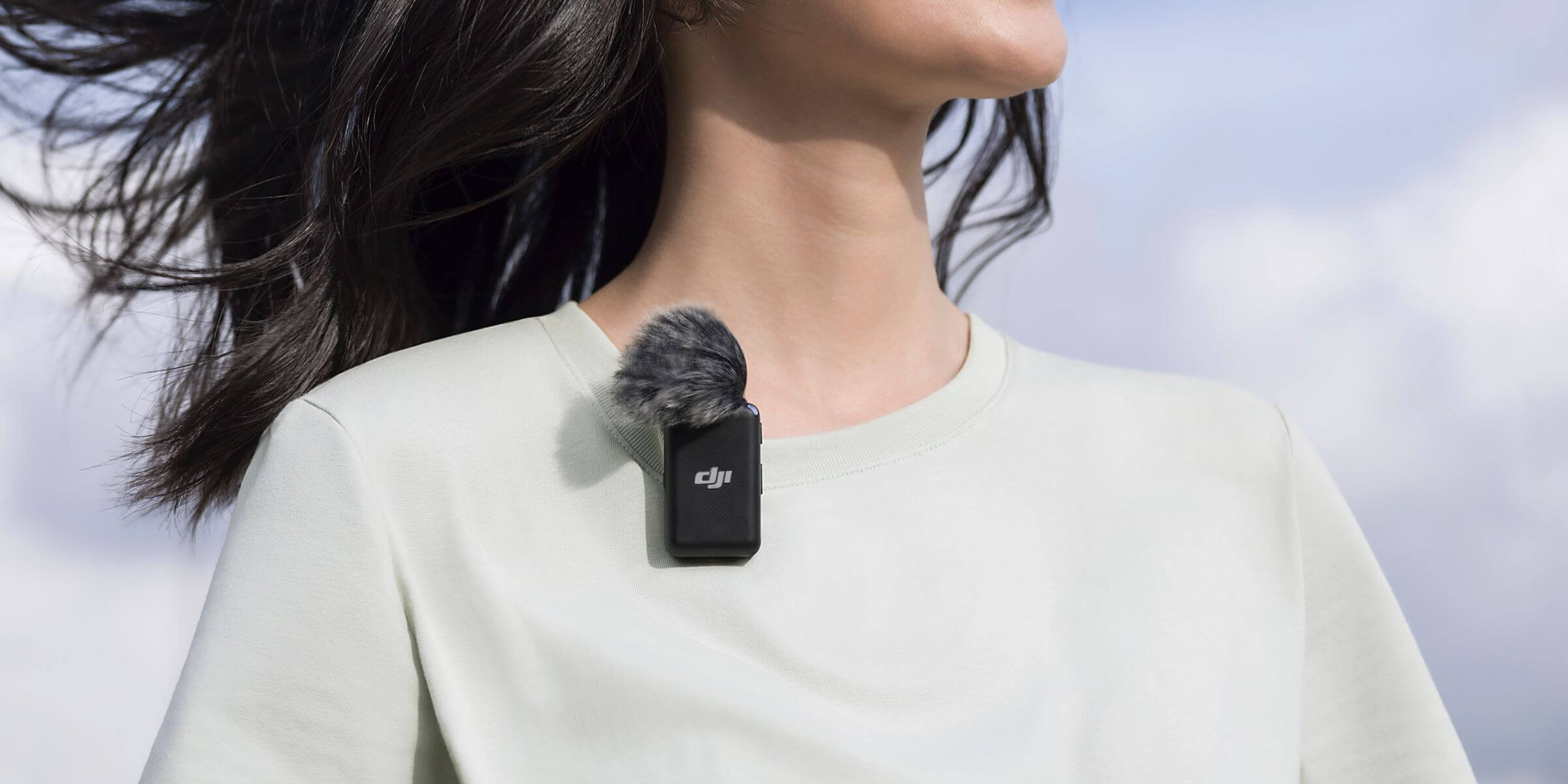
The DJI Mic is an effective wireless microphone system that's very portable, very flexible and good value for money, but if used as a clip-on mic it sounds a little boxy. It can stream or transfer audio to almost anything, it's easy to use and the twin transmitters let you record in stereo, too.
-
+
Everything you need in a box
-
+
Safety Track is a life-saver
-
+
Easy and quick to set up
-
-
Boxy-sounding at distance
-
-
Easy to hit Link button by mistake
-
-
Receiver may block laptop ports
Why you can trust T3

In this DJI Mic review I'm evaluating a new microphone kit for podcasters, vloggers, streamers and anybody else who needs the convenience of twin wireless microphones. This gadget enables you to record on dual channels simultaneously, and it can record a second version of your audio at a lower volume as insurance against unexpected and unwanted popping or clipping from too-loud interviewees. The microphones are omnidirectional, so they can be used for multi-person recordings as well as solo speech.
Although there are much cheaper wireless mics out there, they tend not to have on-board storage. The DJI Mic does, with room for up to 14 hours of audio in each microphone/transmitter. That makes it ideal for vox pops and on-location recording; it's handy if you prefer to pace about when you podcast, too. You can expect up to 5.5 hours from each transmitter, 5 hours from the receiver and up to 15 hours via the charging case. Each transmitter weighs 30g.
DJI is better known for being the brand behind pretty much all of the best drones of recent years, although it has, on occasion, branched out a little with gadgets such as the DJI Action 2 action cam (which launched in November 2021 and is a worthy GoPro alternative), gimbals and vlogging cams (see our DJI OM 5 review, and DJI Pocket 2 review for more on those).
The DJI Mic tackles a different market again, though. So is it actually any good? I put one to the test to see how it holds up against competitors' offerings. Read on for my in-depth DJI Mic review.
DJI Mic review: price and release date
The DJI Mic is US$329 / £289 / AU$509. The original launch date of October 2021 was delayed until March 2022, and like other electronics firms DJI is still dealing with supply issues, which if you're reading this pretty promptly after publish (May 2022), you might find there's a limit of the number you can buy, or have to reserve a unit rather than buy immediately.

The charging case also includes slots for the USB-C and Lightning adapters so they're always to hand
DJI Mic review: features
The DJI Mic delivers wireless recording using the 2.4GHz frequency band with a range of up to 250m.
The key feature here is that the DJI Mic enables you to record from two transmitters simultaneously, so for example you might put one transmitter on your video camera and clip the other to your interviewee's top; use both mics in parallel to get an interesting stereo effect (on computer: if you're recording directly to iPhone, you're limited to mono); or use one as your main mic and the other as a backup. You can adjust the sensitivity of each transmitter by -12dB to +12dB.
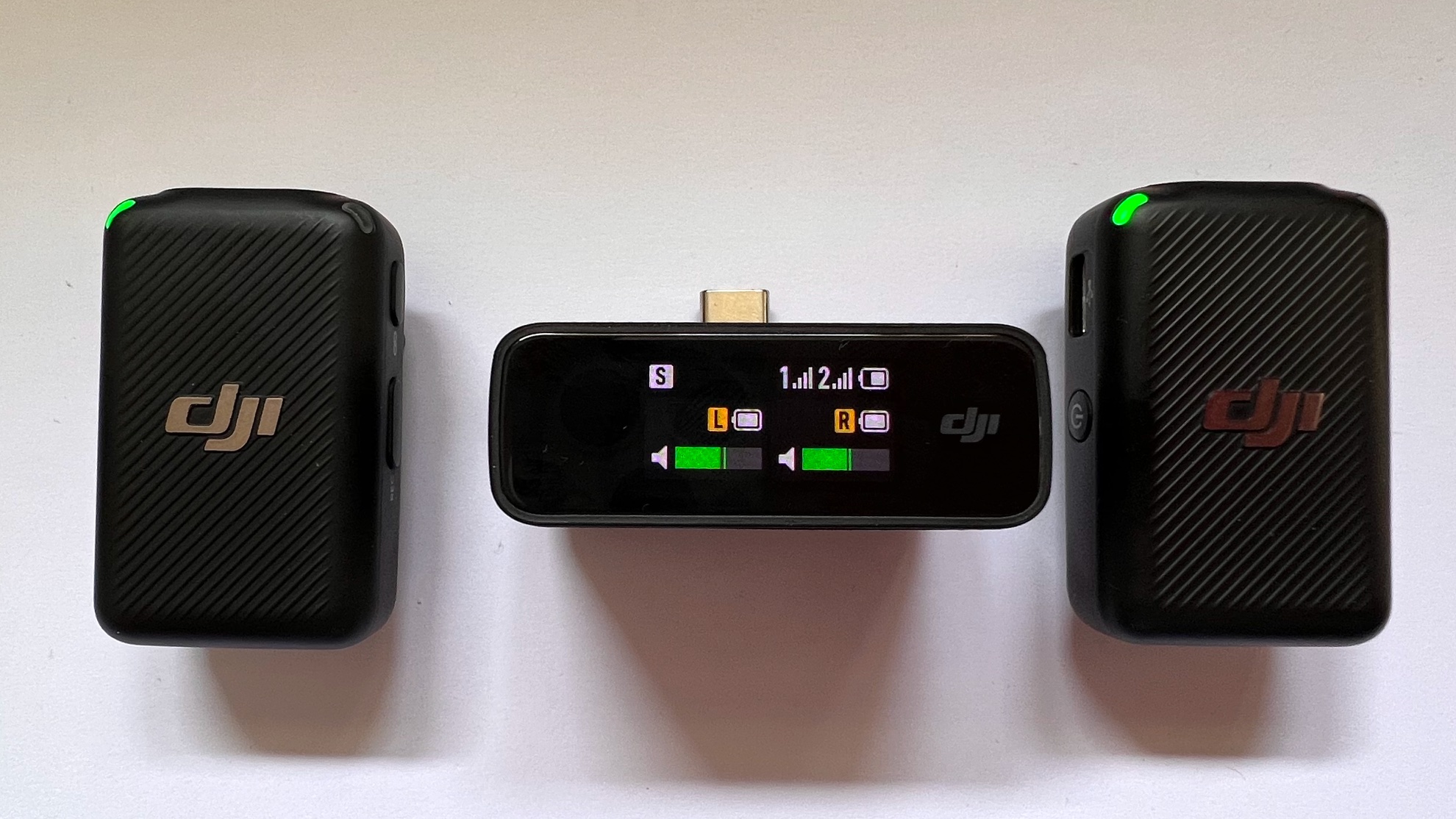
The transmitters and receiver are well made and very compact; pairing the mics is almost instant
One of the best features is the Safety Track, which you activate by recording in Mono-S mode. This automatically records a second version of your audio with a 6dB level cut, so if you or your interviewee ends up hitting the red line and causing clipping distortion on your main audio track you can get the quieter version from the Safety Track and use that instead. That can be a real life-saver if you're recording interviews you can't redo.
The mics' frequency response depends on whether or not you use the Low Cut. If you do, the frequency range is 150Hz to 20KHz, which cuts low-end rumble and the boomiest bits of deep-voiced interviews. With it off, the lower end drops to 50Hz.
DJI Mic review: setup and use
Unboxing the DJI Mic feels a lot like Christmas: inside you'll find the DJI Mic Receiver, two DJI Mic transmitters, a charging case, a 3.5mm TRS audio cable, a USB-C adapter, a Lightning phone adapter, two furry mic windscreens, two clip magnets, a carrying pouch, a hot shoe adapter and a charging cable.
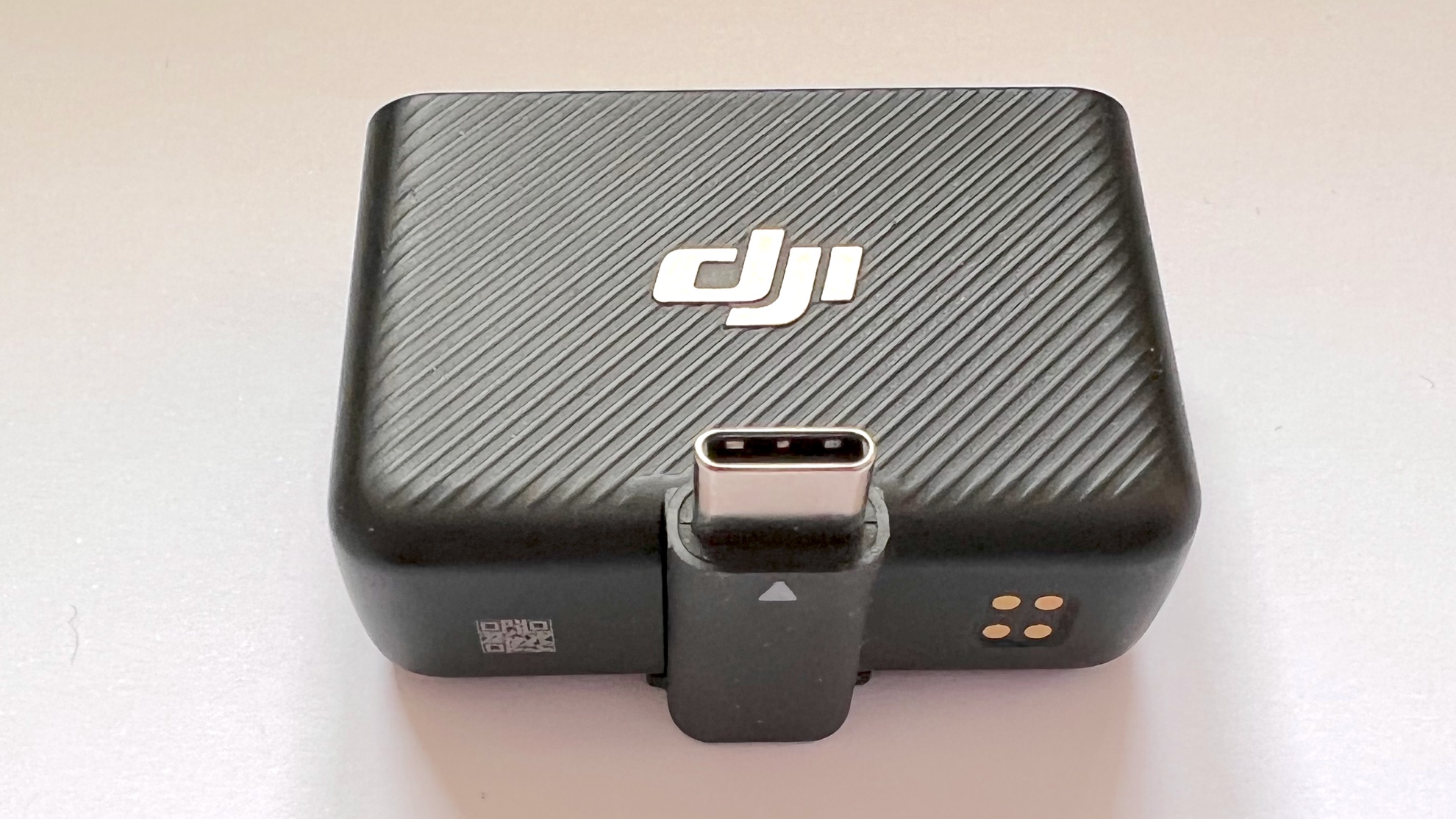
The USB-C adapter is nice and neat, but its central position means the unit blocked the other USB port on my laptop
The USB-C and Lightning adapters slide neatly onto the bottom of the receiver, which is very tidy – but if like your reviewer your laptop has two USB ports next to each other the receiver will block the one it isn't plugged into.
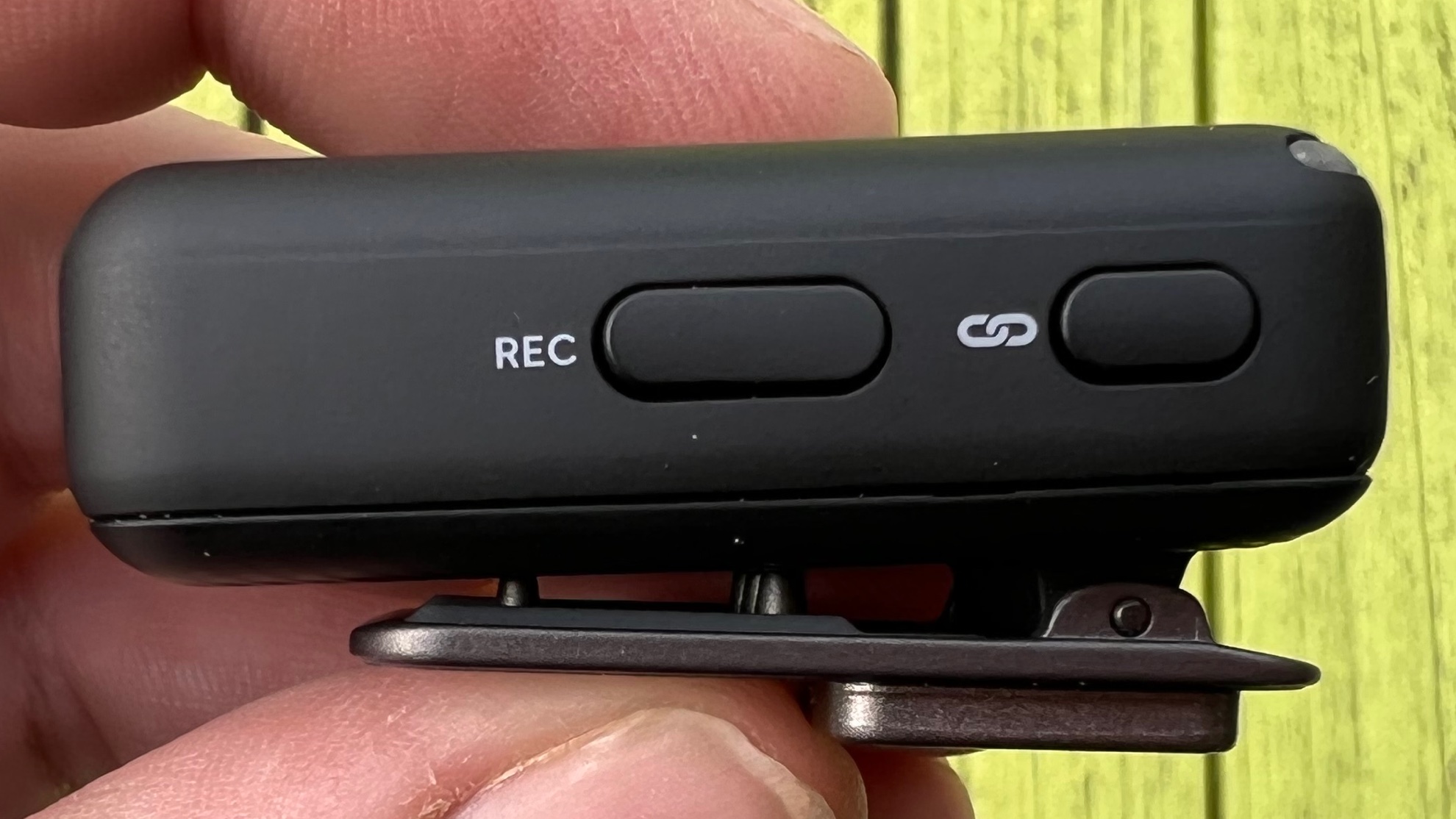
I often found myself pressing the link button (right) when I meant to hit the record button
The microphones have simple, if too-close, button controls for linking and recording, and you can connect them directly to a computer or phone via their USB-C ports to transfer recordings directly. To use the mics as wireless mics for an app such as Logic Pro it's just a matter of fitting the supplied USB adapter to the receiver and plugging it in; it appeared instantly as an audio source and as a mass storage device in the macOS Finder.
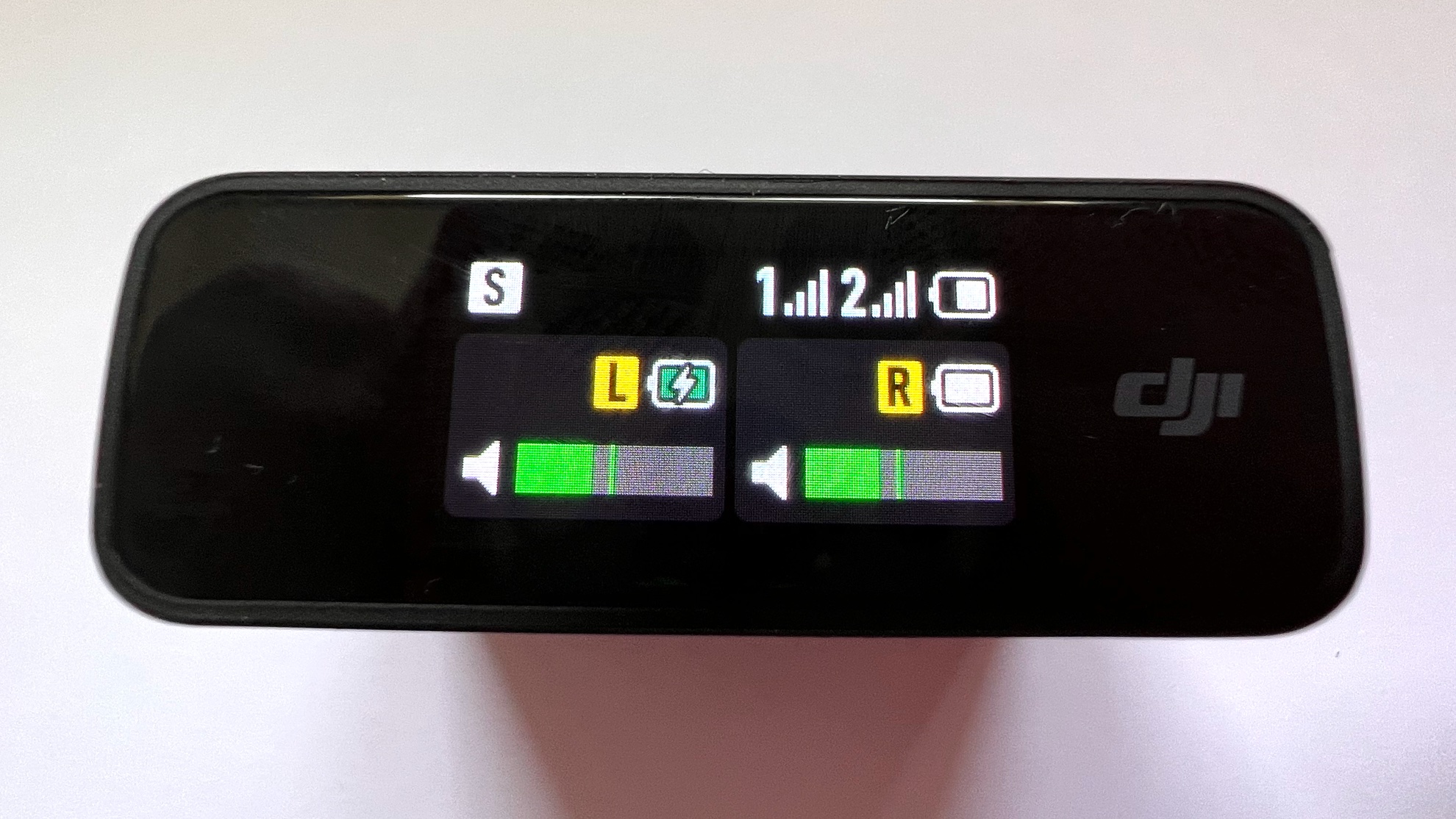
The receiver may be small but its touchscreen delivers all the information you need when you need it
The touchscreen on the receiver is simple and effective, displaying your mic levels and enabling you to adjust gain on each transmitter, enable or disable low cut and adjust audio settings such as whether the recording should be in mono. My unit was set to Chinese but changing the language setting was a two-swipe, one-tap affair.
DJI Mic review: sound quality
I tested the DJI Mic in two scenarios: as a stand-alone recording device, transferring the WAV files to my computer later, and as a wireless microphone streaming live into Logic Pro. There was no difference in audio quality between the two methods: both delivered clear speech without intrusive background noise. Wind suppression with the supplied windshields was effective too.
You can use the DJI Mic in four ways: as a small hand-held microphone; clipped to a camera; as a room mic sitting near the subject; or as a clip-on lavalier mic that attaches with its clip or magnets. If you already have a good quality lavalier you can plug it into the 3.5mm TRS-in socket in the top of the transmitter – and you probably should, because while speaking directly into the DJI Mic delivers impressively clear and full audio it's much less impressive when clipped onto a t-shirt or top.
As a microphone positioned just in front of me, it sounded wonderful and much better than you'd expect from such a small microphone, but clipped on it was noticeably boxier-sounding and middly with a significant drop-off in the higher frequencies.
DJI Mic review: alternatives to consider
The Sennheiser XD Digital Wireless Portable Lavalier Set sells for around $300 / £250 / $AU449. That only gives you one microphone, however, and it doesn't have its own storage. There are also a number of Rode Wireless Go packages; the one most like the DJI is the Wireless Go 2 Dual Channel Microphone System, which has two transmitters, a safety channel, can store up to 7 hours of uncompressed audio and sells for around £235 / $279 / AU$369 –although it doesn't include a phone adapter, so you can expect to pay an additional $20/£20 for that.
If you're looking specifically for a lavalier microphone, Sennheiser's 40-EW is widely regarded as one of the best in the business thanks to its phantom powered cardioid; it's particularly good at handling lower frequencies, enabling it to be used for instruments as well as speech. Expect to pay around £250 / $299 / AU$469; you'll also need a pre-amp (for wired use) or an Evolution wireless adapter to plug it into, which doubles the price.
DJI Mic review: verdict
As an all-in-one package, there's a lot to like about the DJI Mic: you're getting two impressive wireless mics, lots of storage and lots of adapters too, so if you're looking for a complete twin mic system you can simply chuck in a bag or pocket to connect to pretty much anything, it's an excellent option.
However, while as a handheld mic it sounds very good indeed it's much less impressive if you're clipping it onto clothing or recording a room; you'll definitely need to fiddle with your audio's EQ to reduce the boxiness. The specification and price is very similar to the Rode Wireless Go 2, and I'd recommend a close comparison between Rode's various packages and the DJI to see which one best meets your needs.
//images//
DJI mics in case
First reviewed April 2022
Sign up to the T3 newsletter for smarter living straight to your inbox
Get all the latest news, reviews, deals and buying guides on gorgeous tech, home and active products from the T3 experts
Writer, musician and broadcaster Carrie Marshall has been covering technology since 1998 and is particularly interested in how tech can help us live our best lives. Her CV is a who’s who of magazines, newspapers, websites and radio programmes ranging from T3, Techradar and MacFormat to the BBC, Sunday Post and People’s Friend. Carrie has written more than a dozen books, ghost-wrote two more and co-wrote seven more books and a Radio 2 documentary series; her memoir, Carrie Kills A Man, was shortlisted for the British Book Awards. When she’s not scribbling, Carrie is the singer in Glaswegian rock band Unquiet Mind (unquietmindmusic).
-
 Warning: Ciele’s refreshed Elite Collection may cause excessive garment envy on race day
Warning: Ciele’s refreshed Elite Collection may cause excessive garment envy on race dayFlex on your run crew with Ciele’s latest drop
By Matt Kollat Published
-
 Smeg adds a touch of navy sophistication to its iconic breakfast set
Smeg adds a touch of navy sophistication to its iconic breakfast setIt's a minimalist's dream
By Lizzie Wilmot Published
-
 My most anticipated Netflix movie of the year gets a wild new trailer
My most anticipated Netflix movie of the year gets a wild new trailerHavoc looks pretty unbelievable
By Max Freeman-Mills Published